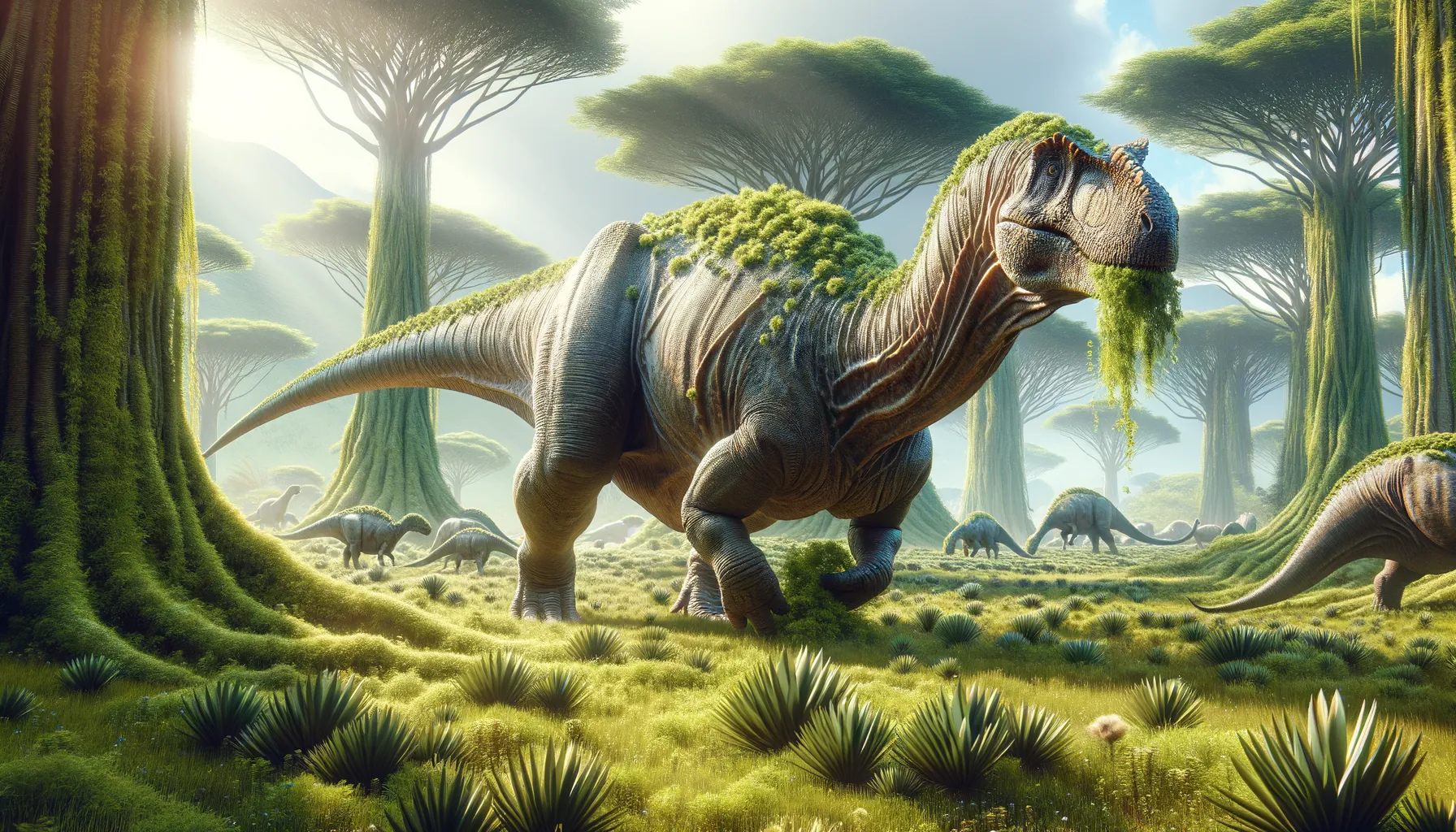
Libycosaurus
Giant of green, master of the Mesozoic!
Period
Cretaceous
Length
Up to 30 feet long.
Height
About 6 to 8 feet at the shoulders.
Weight
Approximately 1 to 2 tons.
Libycosaurus was a large, plant-eating dinosaur known for its imposing size and strength. It roamed the lush terrains of what is now North Africa during the Cretaceous period. This dinosaur was characterized by its herbivorous diet and social behavior, often found in groups. It played a crucial role in maintaining the ecological balance by consuming vast amounts of vegetation, which helped in the formation of the prehistoric landscape.
Diet
Libycosaurus was primarily an herbivore, feasting on a variety of ancient plants. Its diet consisted of ferns, cycads, and conifers. The availability of lush vegetation was crucial for its survival.
Hunting
Being an herbivore, Libycosaurus did not engage in hunting. Instead, it relied on its size and strength to deter potential predators. Its primary focus was foraging and grazing in safe areas.
Environmental challenges
Libycosaurus faced challenges from climate changes that affected vegetation patterns. Periods of drought would have limited the availability of food. Competition with other herbivores for resources was another challenge. Predation by large theropods also posed a risk to young and weak individuals.
Speed
Moderate, suitable for short runs.
Lifespan
Estimated to live for several decades.
First discovery
Fossils first described in the early 20th century.
Fun Facts
- Libycosaurus was not actually a dinosaur; it was a prehistoric mammal-like reptile that lived during the Late Cretaceous period.
- It is closely related to modern-day camels and belongs to the same group called Artiodactyls, which includes hippos and pigs.
- Libycosaurus had a large, bulky body and is believed to have been a herbivore, feeding on plants in its environment.
- Fossils of Libycosaurus have been primarily found in North Africa, giving it its name which means 'Lizard from Libya.'
- Unlike typical reptiles, Libycosaurus had a somewhat unusual body shape that looked more like a combination of a dinosaur and a camel.
- While it might not have been the fastest animal, Libycosaurus likely thrived in its habitat due to its robust build and plant-eating diet.
Growth and Development
Young Libycosaurus likely experienced rapid growth in its early years to reach a size that offered protection against predators. It would have developed communal behaviors early on for social and safety reasons. As it matured, its sturdy limbs and strong jaws were signs of its plant-based diet.
Habitat
Libycosaurus inhabited regions that were lush and full of vegetation, such as floodplains and forested areas. Proximity to water sources was essential for sustaining its large size. The dinosaur migrated across regions to find new feeding grounds as seasons changed.
Interaction with other species
Libycosaurus coexisted with various plant-eating and predatory dinosaurs. It maintained a symbiotic relationship with other herbivores, often seen grazing together. Predators likely targeted their young, leading to the development of protective herding behaviors.
Natural lifespan
Libycosaurus likely lived up to around 40 years.
Reproduction
Libycosaurus is believed to lay eggs in nests constructed in safe, hidden locations. Parental care was likely limited to the nesting period. Hatchlings were vulnerable and would require rapid growth to avoid predation.
Social behaviour
This dinosaur displayed herding behavior, which helped it defend against predators. Large groups provided safety in numbers. Vocalizations and physical gestures might have been used for communication within groups.
Fossil locations
The fossils of Libycosaurus have primarily been found in Africa, specifically in countries such as Libya and Egypt. These findings have provided significant insight into its existence during the Cretaceous period. The abundance of fossils in these areas indicates that it was a thriving species in its habitat.
